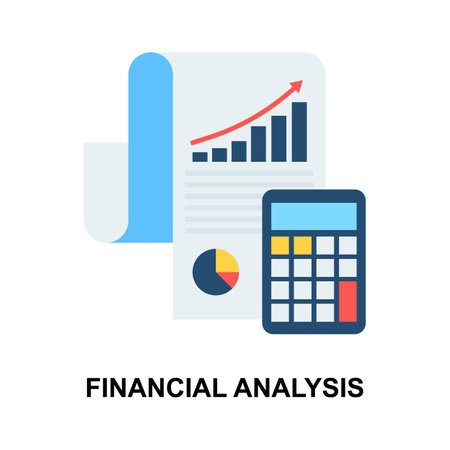1. Understanding Economic Downturns and Their Impact on 401(k)s
Most Americans have heard phrases like “recession,” “market crash,” or “economic downturn” tossed around in the news, especially when times get tough. But what exactly does an economic downturn mean, and why should it matter to your 401(k)? Simply put, an economic downturn happens when the economy slows down for an extended period—think of job losses, businesses closing their doors, or a sharp drop in stock prices. These periods can be triggered by various factors such as rising interest rates, global events (like the COVID-19 pandemic), or bursting financial bubbles (remember the housing crisis in 2008?). For many working Americans, the most direct impact of a downturn is often seen in retirement accounts like 401(k)s. Since 401(k)s are typically invested in stocks, bonds, and mutual funds, their value tends to fall when the markets take a hit. For example, during the Great Recession of 2008-2009, millions watched as their hard-earned savings temporarily shrank—sometimes by double digits—in just a few months. It’s a gut-wrenching experience that can feel personal, even though it’s part of a larger economic cycle. Understanding how these downturns work is the first step toward protecting your financial future and making informed decisions about your retirement savings.
2. How 401(k) Values Fluctuate During Tough Times
When the U.S. economy hits a rough patch, it’s natural for Americans to worry about their retirement savings—especially their 401(k)s. But what really happens to these accounts during downturns? To understand this, it helps to look at how 401(k) investments are built and why they’re so sensitive to economic shocks.
The Mechanics of 401(k) Investment Changes
Most 401(k) plans are heavily invested in the stock market, which means that when Wall Street gets jittery, so do retirement balances. Economic downturns often spark sharp drops in stock prices, leading to immediate dips in the value of your portfolio. Bonds and other assets might cushion the blow somewhat, but equities usually make up the largest slice of most plans.
Typical Asset Allocation in a 401(k)
| Asset Type | Typical Percentage |
|---|---|
| Stocks (Equities) | 60% – 80% |
| Bonds | 10% – 30% |
| Cash & Other Assets | 5% – 15% |
Stock Market Volatility: The Main Culprit
During a downturn, market volatility spikes as investors react to bad news—think layoffs, falling GDP numbers, or global crises. This volatility can cause daily swings in your 401(k) value. For example, during the Great Recession and the COVID-19 crash, some people saw their account balances drop by 20% or more within months.
Behavioral Trends Among American Investors
Tough times test even the most disciplined savers. Behavioral finance studies show that many Americans react emotionally during downturns—they may panic-sell stocks or stop contributing altogether. Ironically, these moves can lock in losses and undermine long-term gains.
Common Investor Responses During Downturns
| Response | Potential Impact on 401(k) |
|---|---|
| Panic Selling Investments | Locks in losses; misses recovery gains |
| Reducing Contributions | Loses out on dollar-cost averaging benefits |
| Staying Invested/Continuing Contributions | Historically leads to better long-term outcomes |
The bottom line: understanding how your 401(k) reacts to economic slumps—and recognizing common investor behaviors—can help you make smarter decisions when markets get rocky.

3. Common Emotional Reactions and Financial Mistakes
When the economy takes a turn for the worse, it’s natural to feel anxious about your 401(k) balance. The emotional rollercoaster of seeing your hard-earned savings drop can trigger powerful reactions—even among experienced investors. One of the most common responses is panic-selling: selling off investments during a downturn to “cut your losses.” While this might bring short-term relief, history shows it often locks in losses and misses out on future market rebounds. Another frequent mistake is hitting pause on your 401(k) contributions. It may seem wise to keep more cash on hand, but stopping contributions means missing out on employer matching and the benefits of buying shares at lower prices—a key advantage when markets are down.
The psychological toll of downturns can’t be underestimated. Fear and uncertainty cloud judgment, making it tempting to follow the crowd or react impulsively to negative headlines. Unfortunately, these choices rarely pay off in the long run. Market recoveries are unpredictable; if you’ve already cashed out or stopped investing, you risk missing the crucial upswing that helps grow your retirement fund over time.
Remember, investing for retirement is a marathon, not a sprint. Letting emotions drive your decisions can set back years of progress and make reaching your financial goals much harder. By understanding these common mistakes—and why they happen—you’ll be better equipped to stay calm, focused, and committed to your future even when times get tough.
4. Smart Steps to Take When Markets Get Rocky
Economic downturns are unsettling, but your 401(k) can weather the storm with smart, steady strategies. Here’s how you can take action, keep perspective, and even find opportunities when the market gets bumpy.
Stay the Course—Don’t Panic Sell
It’s tempting to hit the eject button when your account balance drops, but history shows that sticking with your long-term plan pays off. Selling during a downturn locks in losses and means missing out on the recovery. Remember: time in the market beats timing the market.
Rebalance Your Portfolio
Market swings can throw your investment mix out of whack. Review your asset allocation—stocks, bonds, and other investments—to make sure it still matches your risk tolerance and goals. Rebalancing helps you buy low (adding to undervalued assets) and sell high (trimming those that have grown). Here’s a simple guide:
| Age Group | Recommended Stock Allocation | Recommended Bond Allocation |
|---|---|---|
| 20s-30s | 80-90% | 10-20% |
| 40s-50s | 60-70% | 30-40% |
| 60+ | 40-50% | 50-60% |
Tip: Most 401(k) plans let you rebalance online or automatically set up periodic rebalancing.
Maximize Employer Matches
Your employer match is free money—don’t leave it on the table, especially during uncertain times. Even if you’re tightening your budget, try to contribute at least enough to get the full match. This extra boost can help offset any short-term losses from a downturn.
Culturally Relevant Example:
If your employer matches 100% of contributions up to 6% of your salary, and you earn $60,000 per year, contributing $3,600 means an extra $3,600 from your company—a total of $7,200 going into your retirement savings annually.
Avoid Draining Your 401(k)
It can be tempting to tap into your 401(k) when money is tight, but early withdrawals come with taxes and penalties—and they set back your future goals. Instead, explore other financial relief options first.
The Bottom Line
Tough times don’t last forever, but tough savers do. By staying calm, rebalancing thoughtfully, maximizing employer perks, and avoiding knee-jerk reactions, you’ll put yourself in a strong position for long-term growth—even when things look rough today.
5. Using Downturns as Opportunities for Growth
When the stock market takes a nosedive, it’s easy to feel anxious about your 401(k). But throughout American history, some of the most inspiring stories have come from those who saw tough times as a springboard for future success. Let’s look at how you can channel that spirit and turn market downturns into opportunities for growth.
The Silver Lining: Buying Low
One legendary example is Warren Buffett, who famously said, “Be fearful when others are greedy and greedy when others are fearful.” During downturns, stocks are often “on sale,” meaning you can buy more shares with each dollar you invest. By consistently contributing to your 401(k) through automatic payroll deductions—even in rocky times—you’re practicing dollar-cost averaging. Over time, this strategy can lower your average purchase price and boost long-term gains when the market rebounds.
Diversifying Like a Pro
Economic uncertainty is also a wake-up call to diversify. Don’t put all your eggs in one basket—spread your investments across different asset classes like stocks, bonds, and real estate funds within your 401(k). Americans who weathered past recessions found that a well-diversified portfolio helped cushion losses and capture gains when growth returned. Consider rebalancing periodically to maintain your desired mix.
Building Financial Resilience: The American Dream
The heart of the American dream is resilience—the belief that hard work and smart choices lead to a brighter future. Use downturns as motivation to review your savings rate, set new financial goals, or learn more about investing. Stories abound of regular folks who stuck to their plan during challenging times and watched their retirement accounts thrive in the long run. Remember: every dip in the market is also a chance to build the habits and mindset that lead to lasting wealth.
6. When to Seek Professional Advice
During economic downturns, uncertainty about your 401(k) can be overwhelming, but you don’t have to navigate these challenges alone. Knowing when and how to reach out to a financial advisor can make a significant difference in your retirement planning strategy. If you’re feeling anxious about your investment choices, uncertain about rebalancing your portfolio, or simply want reassurance that you’re on the right track, it’s a smart move to consult with a professional. Financial advisors are equipped with up-to-date market knowledge and can help tailor strategies to your unique situation, especially during volatile times.
Recognizing the Right Time for Guidance
Major life changes—such as job loss, nearing retirement age, or facing significant market losses—are clear signals that it might be time to seek expert advice. Even if you’re just unsure whether to adjust your contribution levels or investment mix in response to economic shifts, a conversation with a trusted advisor can offer clarity and confidence. Don’t wait until panic sets in; proactive communication is key to weathering economic storms successfully.
How to Connect with Financial Advisors
Most Americans can access financial guidance through their 401(k) plan providers, employer-sponsored resources, or independent advisory firms. Many employers offer free or low-cost consultations as part of their benefits package—take advantage of these services before making big decisions. You can also turn to reputable organizations like the National Association of Personal Financial Advisors (NAPFA) or Certified Financial Planner Board for directories of qualified professionals.
Empowering Yourself Through Proactive Dialogue
Be open and honest about your concerns and goals when speaking with an advisor. Prepare questions ahead of time, such as how different market scenarios might impact your retirement timeline or what steps you should take now to protect your nest egg. Remember, seeking help is not a sign of weakness—it’s a wise investment in your future security. By connecting early and often with experts, you’ll be better positioned to navigate uncertainty and keep your 401(k) growth on track, no matter what the economy brings.

